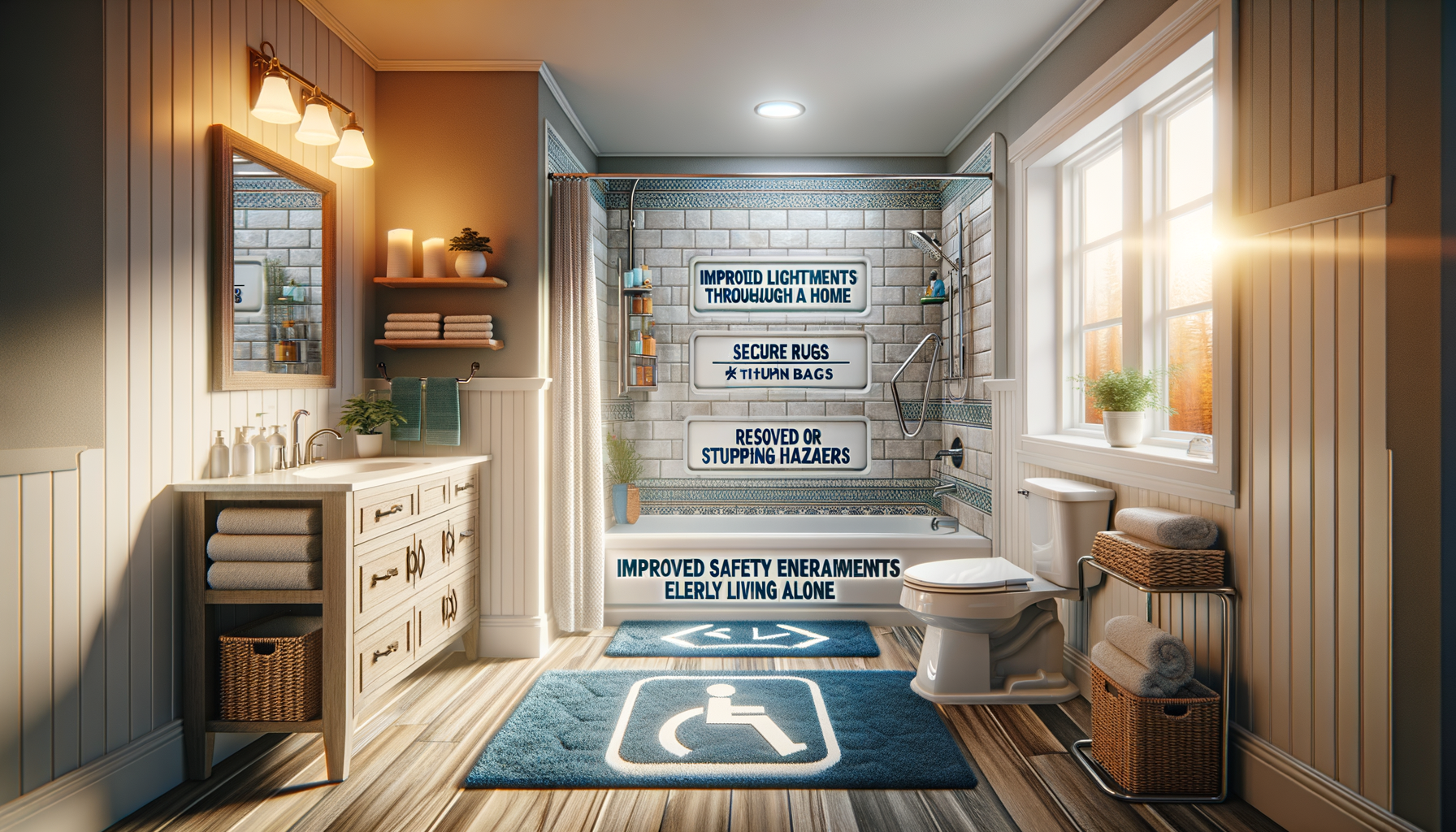Ways to Modify a Home to Help Prevent Falls in Elderly Living Alone
How can certain living spaces be altered to promote greater stability for those residing independently? Considering potential hazards within a home can be a proactive step. Simple adjustments to common areas might play a role in minimizing the risk of accidents.

Enhance Bathroom Safety to Prevent Falls
The bathroom is often considered one of the most hazardous places in a home, particularly for elderly individuals who may be living alone. The combination of water, slippery surfaces, and hard fixtures can create a perfect storm for accidents. Enhancing bathroom safety is therefore a critical step in fall prevention. One effective method is installing grab bars near the toilet and in the shower or bathtub. These bars provide support and stability, allowing individuals to maneuver more confidently.
Non-slip mats or adhesive strips can be placed in the shower or bathtub to reduce the risk of slipping. Additionally, consider a shower chair or bench, which allows individuals to sit while bathing, thus reducing the need to stand on a potentially slippery surface. Elevated toilet seats can also be beneficial, as they reduce the effort required to sit and stand.
Another consideration is the installation of adequate lighting. Many falls occur due to poor visibility, especially at night. Motion-sensor lights or nightlights can illuminate the path to the bathroom, making it easier to navigate safely. By addressing these key areas, the bathroom can be transformed from a high-risk zone into a safer environment.
Improve Lighting and Visibility Throughout the Home
Good lighting is essential for maintaining a safe living environment, particularly for those who may have diminished vision. Improving lighting and visibility throughout the home can significantly reduce the risk of falls. Start by assessing the current lighting situation in each room. Are there dark corners or areas where shadows are cast? Consider installing additional lighting fixtures or brighter bulbs to illuminate these spaces.
Hallways and staircases are critical areas where enhanced lighting can make a significant difference. Installing motion-sensor lights in these areas ensures they are well-lit whenever someone is passing through. Additionally, light switches should be easily accessible, ideally located at both the top and bottom of staircases.
Natural light can also play a role in improving visibility. During the day, open curtains and blinds to allow sunlight to flood into rooms, reducing reliance on artificial lighting. For those with visual impairments, contrasting colors on walls and floors can help differentiate between different areas, further enhancing visibility. By taking these steps, the home becomes a brighter, safer place to navigate.
Secure Rugs and Remove Tripping Hazards
Rugs and other tripping hazards are common culprits in household falls. Securing rugs and removing potential tripping hazards can significantly enhance safety within the home. Loose rugs can easily slip or bunch up, creating an uneven surface. To prevent this, use non-slip rug pads or double-sided tape to keep rugs firmly in place. Alternatively, consider removing rugs altogether, particularly in high-traffic areas.
Beyond rugs, it’s essential to conduct a thorough assessment of the home to identify other potential tripping hazards. Electrical cords, for example, should be neatly organized and kept out of walkways. Furniture arrangement is another key factor; ensure there is ample space to move around without obstruction. Clutter, such as shoes or bags, should be regularly cleared from floors to maintain a clear path.
For those with mobility aids, such as walkers or canes, ensuring a clear and unobstructed path is even more critical. Regularly review the home environment to identify and address any new hazards that may arise. By taking these proactive measures, the risk of falls due to tripping can be significantly reduced, fostering a safer living space for everyone.